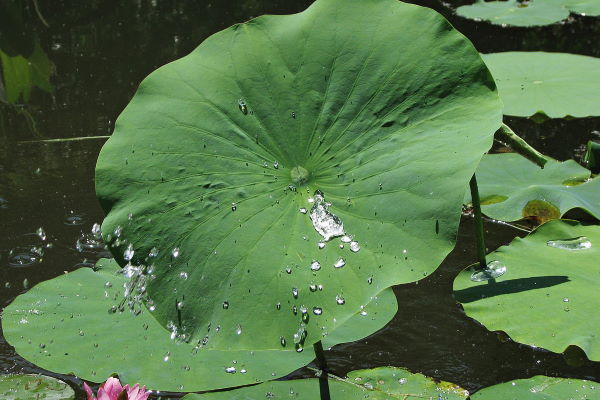Biomimicry in footwear design
Highlighting some of the potential applications for biomimicry in consumer products.

Image © TimVickers
Researchers, designers and engineers in all fields are constantly presented with problems requiring novel solutions. Whether in the field of the built environment – for example, designing structures to withstand earthquakes or avoid flooding, or the development of materials with unique properties, researchers can draw inspiration using biomimetic principles.
‘Biomimicry’ is, as the name implies, the act of mimicking biological processes – taking inspiration from nature in order to solve problems in the human world. It is by no means a new technology. Biomimetic products have been incorporated into many aspects of daily life, one of the most widely used being hook and loop tape. The idea behind this came from the microscopic hooks found on the seeds of burdock plants, that so easily attach to animals’ fur. This is now commonly found as a fastening on a wide range of footwear and apparel.
Water repellence
Another well-known example of biomimicry is the lotus leaf effect. The leaves of the lotus plant (Nelumbo nucifera), like many plants, have a hydrophobic waxy coating. Unique to lotus leaves, however, is a surface microstructure of bumps, which reduces the contact area between water and leaf. This means that water drops landing on the leaf form beads that roll off, washing away dirt and debris in the process and so creating a self-cleaning surface. This effect has been widely exploited in the manufacture of water-repellent, self-cleaning windows and textiles used for awnings and similar products. In the future, this technology may find some applications in footwear materials.

Derek Ramsey. Location: Chanticleer Garden
The leaves of the lotus plant have a special surface microstructure that causes water droplets to roll off
The lotus microstructure has also been investigated for a very different purpose: increasing the efficiency of solar panels. By layering the solar cell components over a reflective base with microscopic bumps that mimic the lotus leaf microstructure, photons that would otherwise be reflected away from the cell are, instead, reflected back into the active components. This increases the amount of energy absorbed, while retaining the self-cleaning function of the lotus leaf model.
Gecko tape
Many biological principles suitable as biomimetic models work due to their hierarchical structures. These are different levels of organisation, from nanoscale structures upwards, which all contribute to the observed effect and are exemplified by gecko feet. The wall-crawling ability of geckos has been observed for thousands of years, and is made possible by the exploitation of weak intermolecular attractive forces known as ‘van der Waals forces’. Tiny protrusions known as ‘setae’, which themselves are covered in even smaller protrusions, cover the gecko’s feet, grouping into larger ridge-like structures called ‘lamellae’ on the foot pads. With each animal having millions of these setae, the foot’s surface area is greatly increased, multiplying the effects of van der Waals forces and allowing the gecko to ‘stick’ to almost any surface.

TimVickers
Scientists have long marvelled at the gecko's ability to cling to smooth surfaces – even glass – and are working to develop tape that reproduces this grip
Materials exploiting this effect are under development (particularly in the form of a tape) and have particularly been anticipated to be useful as a substitute for chemical adhesives in medical applications.
Other examples
There are countless other potential applications of biomimetic principles. Spider silk has been particularly well researched due to its remarkable properties: stronger than steel weight-for-weight, and both tougher and more extensible than Kevlar, while still being completely biodegradable. It is also extremely versatile, with many different types of silk being produced for various needs. Researchers in Canada have genetically engineered a herd of goats to produce the spider silk proteins in their milk, which can then be extruded and spun into nanoscale fibres.

Whiteway / iStockphoto.com
A burr – the inspiration for the invention of hook-and-loop fastening
Elsewhere, biological structures have inspired a number of man-made structures. The Eastgate Centre building in Zimbabwe was modelled on termite mounds, which use numerous vents to manage airflow and keep the mound cool. On a much smaller scale, structural colour pigments in a novel type of car paint self-assemble to be parallel with the car body, reflecting different wavelengths of light when viewed from particular angles, thus mimicking butterfly scales.
Only a few examples have been mentioned here, but others can be found in a wide range of industries, from materials development to nanoscale actuators and vehicle design. Drawing inspiration from successful designs found in the natural world, scientists and designers are able to arrive at innovative solutions to engineering problems. In the footwear industry, biomimicry may not immediately have many direct applications, but these innovative technologies could find their way into an increasing number of products to improve their physical or even aesthetic properties.
How can we help?
Please email innovation@satra.com for further information on the utilisation of new technologies for footwear applications.
Publishing Data
This article was originally published on page 20 of the June 2020 issue of SATRA Bulletin.
Other articles from this issue »


 EN
EN ZH
ZH